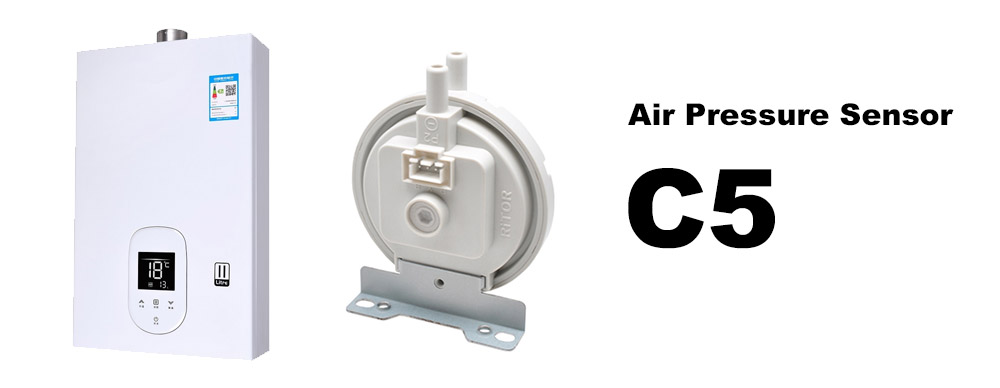CONTACT REGAL
- Address: 16F Henghejingu Mansion, NO. 30 Yanda Road, Huizhou, Guangdong, China
- WhatsApp +8613652750640
- Email: allen@airpressureswitch.com
QUICKLY LINK
The air pressure switch boiler sensor is a linear output pressure sensor, using L/C oscillating circuit principle, used in wall-mounted furnaces and water heaters. Professional service, 10 years factory.
The gas water heater’s air pressure switch (which is actually the air pressure sensor), usually located in the upper right corner of the water heater, is a disc-shaped object about the size of a teacup lid, connected by three wires, and a hollow plastic tube.
The water-gas linkage device of the gas water heater is started by the water flow after the hot water bridle is opened. The physical displacement drives the micro switch, opens the solenoid valve to supply gas, and triggers the ignition circuit.
At the same time, the micro switch also starts the strong exhaust fan, which starts the forced exhaust system, the strong exhaust fan has a bypass, through a small plastic pipe, to provide air pressure to the wind pressure sensor, the wind pressure sensor built-in film, one side is subject to wind pressure (air pressure), the sensor signal is continuously and stably provided to the ignition control loop, once the sensor signal is interrupted, The machine logic automatically cuts off the ignition circuit and closes the air valve. Eventually, it will cause the water heater to passively stop working.

(1) Linearity: Air Pressure Switch Boiler refers to the degree to which the actual relation curve between sensor output and input deviates from the fitting line. Defined as the ratio of the maximum deviation between the actual characteristic curve and the fitted line in the full-scale range to the output value of the full scale.
(2) Sensitivity: Sensitivity is an important indicator of the static characteristics of the sensor. It is defined as the ratio of an increment in an output quantity to the corresponding increment in an input quantity that causes the increment. The sensitivity is indicated by S.
(3) Hysteresis: When the input quantity of the sensor changes from small to large (positive stroke) and the input quantity changes from large to small (reverse stroke), the input-output characteristic curve does not coincide, which becomes hysteresis. For the same size of the input signal, the positive and negative stroke of the sensor output signal size is not equal, this difference is called the hysteresis value.
(4) Repeatability: Repeatability refers to the degree of inconsistency of the characteristic curve obtained when the input of the sensor changes continuously in the full range in the same direction.
(5) Drift: the drift of the sensor refers to the output of the sensor changes with time when the input is unchanged, and the second phenomenon is called drift. There are two reasons for the drift: one is the structural parameters of the sensor itself; Second, the surrounding environment (such as temperature, humidity, etc.).
| Model Number | C5 without wire & connector |
| Working Medium | Air or Gas tail gas |
| Withstand Pressure | 2000Pa Max. (Pa to Psi) |
| Sensor Accuracy | ±2%(Hz) |
| Dielectric Strength | 500VAC (<3mA) |
| Rated Voltage | DC4.75V – DC5.25V |
| Rated Current | 5mA |
| Low-Duty-Cycle | 50% |
| Working Temperature | 40T90 (-40 to 90℃) |